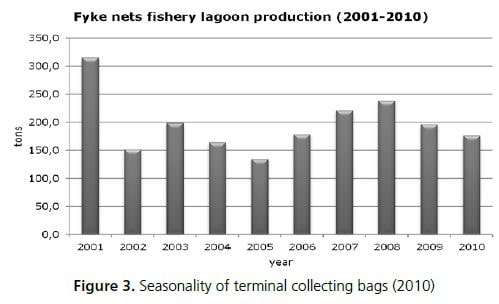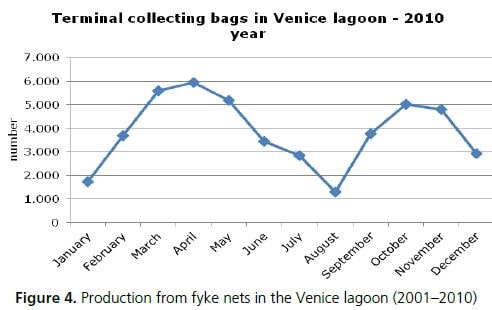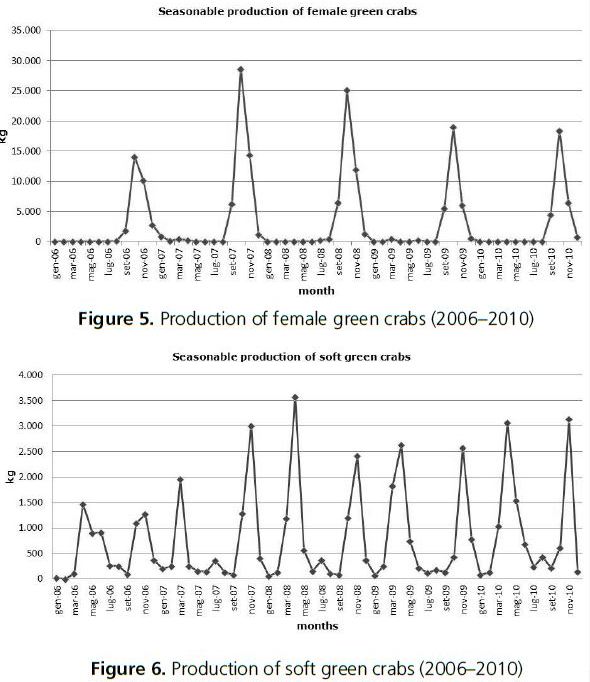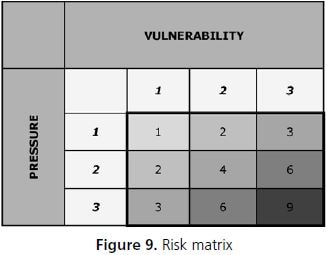CASE STUDY 1: FISHERY ACTIVITIES AND MANAGEMENT PLAN IN THE VENICE LAGOON
T. Galvan*, R. Lazzarini*, G. Salogni**
*Agriteco SC, Marghera (VE), Italy
** Giunta Regionale del Veneto, Segreteria regionale per le Infrastrutture, UP Coordinamento Commissioni, Servizio pianificazione ambientale, Venezia, Italy
The Venice lagoon, located on the Adriatic coast, is the largest coastal lagoon in the Mediterranean which covers, including the islands, an area of approximately 55 000 ha. It is parallel to the coast and it extends between the mouths of the rivers Piave (North) and Brenta (South). The lagoon is separated from the Adriatic Sea by a coastal strip made of narrow parallel strands to the coast interrupted by three inlets: Lido, Malamocco and Chioggia. The lagoon is divided by three watersheds into four sub-basins: Treporti (15 000 ha) and Lido (10 000 ha) in the North, Malamocco (17 000 ha) in the center and Chioggia (13 000 ha) in the South. Each sub-basin is in communication with the sea through the inlets; deep waterways depart from these inlets and then branch into progressively smaller and less deep channels, ending with small intertidal channels (called ghebi). More than four-fifths of the lagoon water surface is affected by tidal excursion that is the highest in the Mediterranean Sea, with a range of about 1 m between low and high tide. About 80 percent of the entire lagoon consists of water areas; the rest is made up of land and salt marshes.
The Venice lagoon can be considered as a transitional aquatic ecosystem that interconnects the continental and marine ecosystems, which have different energy fluxes, nutrient cycles and characteristics of the biota. The total surface includes 33 000 ha of water areas and more than 9 000 ha of extensive fish farms.
There are several different fishery activities such as capture with fyke nets, Manila clam culture, mussel culture, oyster culture, fish farms, juveniles capture, and other generally seasonal fishery activities. During the period of the Serenissima Republic (1261), a specific authority (the Magistratura della Giustizia Vecchia) was created to regulate fisheries and to set minimum size at capture. At present, the Venice Water Authority (Magistrato alle Acque) and the Province of Venice and Padua legislate all the fishery activities in the Venice lagoon. There are two main fishery activities in the Venice lagoon: fyke nets fisheries and Manila clam culture.
With fyke nets, the fishers capture many different species: Boyer's sand smelts (Atherina boyeri), cuttlefishes (Sepia officinalis), brown shrimps (Crangon crangon), common prawns (Palaemon spp), grass gobies (Zosterisessor ophiocephalus), eels (Anguilla anguilla), flounders (Platichthys flesus), grey mullets (family Mugilidae), gilthead seambream (Sparus aurata), European seabass (Dicentrarchus labrax) and green crabs (Carcinus aestuarii).
Fyke nets fishery activities are practiced by 112 fishers that are divided into 7 cooperatives (two fishers are not included into any cooperative). The Cooperativa San Marco from Burano, Cooperativa Piccola Pesca from Pellestrina and Coopesca from Chioggia are the principal ones, with more than 80 percent of fishers affiliated with them. Since work is very hard and needs daily fyke nets cleaning and maintenance, young fishers prefer to work in Manila clam culture. From 1997 to 2005, the number of fyke net fishers decreased, and only since 2008 there was a little increase, probably due to the crisis in Manila clam culture and Adriatic clam fishery (Fig. 1). Average fishers age (Fig. 2) is still increasing, showing a constant aging of the category, and a low percentage of women fishers.

Figure 1. Evolution of number of fyke net fishers (1997–2010)
Figure 2. Average age of fishers (1997–2010)
Fyke nets are set in the lagoon in two main periods (Fig. 3): in spring (called quaresima) and in autumn (called fraima), with almost 6 000 terminal collecting bags (the traps situated at the fyke nets end). Summer and winter are the two periods where fishers usually do the maintenance and therefore there are fewer nets in the lagoon (even because in that period the Venice lagoon is really poor with fishes).

Figure 3. Seasonality of terminal collecting bags (2010)
During the 1990s, the average annual production from these traditional fishing systems was estimated at approximately 480 tonnes/year. In 2001 (Fig. 4), production started to decrease and in the recent years it ranged between 140 and 240 tonnes.

Figure 4. Production from fyke nets in the Venice lagoon (2001–2010)
One of the most important productions of the Venice lagoon is the green crab, Carcinus mediterraneus. The life cycle of this species allows fishers to use two different phases of its life: one is in autumn when the females undergo sexual maturity and are captured and sold as mazenete (Fig. 5), the second, in both spring and autumn when males and females shed their carapace to grow (Fig. 6). In this very moment, fishers take these crabs out of water to block the processes of calcification of the exoskeleton and sell the crabs without carapace; for this reason this product is called moeca, which means soft crabs.

Figure 5. Production of female green crabs (2006–2010)
Figure 6. Production of soft green crabs (2006–2010)
This activity ranges between capture fisheries and aquaculture because fishers catch the crabs from the lagoon water and select only those that should become a soft crab; they then put them back in water in some special baskets (called vieri) where they wait until the carapace starts to open; they finally move them into a new basket ready for sale. This is a very peculiar and specialized delicatessen from the Venice lagoon that could reach the price of more than 80.00 €/kg, because nowadays there are so few fishers who carry out this activity and know how to select a good crab that will become a soft crab, from a ‘crazy crab’ (as fishers call it) that will not turn soft in that period.
Another important fishery activity in the Venice lagoon is the farming of Manila clams. In 1983, a new species of clam, Tapes philippinarum, was introduced in the Venice lagoon as an experimental trial to evaluate the possibility of diversifying shellfish production, until then limited mainly to mussels. In a few years, this species colonized large areas of the lagoon due to a high growth rate and to the ability to adapt to a wide range of environmental conditions (salinity, temperature, sediment type, etc.). The exploitation of natural beds started with the use of highly mechanized fishing systems such as hydraulic dredges (up to the mid-1990s and then forbidden), or small boats with a dredge without teeth (rusca) and harvesting machines (vibrante) (from the mid-1990s onwards). The rusca, drawn by an out-board engine, is a fishing tool used in the lagoon of Venice since 1994–95; it was modified by the professional experience of fishers, improving its efficiency and capture capability. This tool is formed by a steel box (cassa); parallelepipe-shaped, with a pentagonal mouth 0.7 m wide, 0.4 m high and 30 kg of weight. The cassa has two lateral sled-runners that prevent its ditching into the sediment. The rusca is used at a maximum depth of 1.5 m and it is attached with chains to the stern of the boat. The boat used for this type of fishing is provided with two engines: one used during normal sailing and an auxiliary one (15-25 hp) used only during fishing operations. The auxiliary engine operates only in the fishing zone and it is used to move sediment and clams and direct them into the net.
The harvesting machines “vibrante” is formed by a parallelepipe-shaped cage, tapering in the side of the mouth. The mouth is about 2 m wide (blade length) and 30 cm high; the length of the cage is 1.45–1.80 m and its weight is 600 kg. On the cage, there are one or two electric or hydraulic vibrating engines and an electric or hydraulic cable. There is also one anterior or two lateral sled-runners. The fishing operations of this tool are very similar to the ones of the hydraulic dredge. When the vessel reaches a suitable fishing place, the speed is slowed down and the stern anchor is dropped. The vessel goes on for 200–300 m, and when it is almost stationary, the steel cage is lowered on the bottom to begin dredging operations. Dredging takes place drawing the cage with the stern winch, which rewinds the steel cable of the anchor. The vibrating system of the cage allows the removal of sediment and a first selection of the catch. When the fishing operation is finished, the steel cage is taken on the stem and the catch is conveyed to a sieve.
In 1995, by decision N° 4752, the Venice Water Authority (Magistrato alle Acque) authorized the use of six lagoon water spaces for a total of 270 ha to be used as edible shellfish farming. The surface dedicated to the Manila clam farm increased until 2002 with more than 3 500 ha; in 2005–2007 the extension decreased to more or less 3 000 ha and at present only 2 577 ha are authorized for Manila clam farming. This reduction was due to a general review of the areas by the Venice Water Authority (Magistrato alle Acque) to discover if some fishers who had an area really used it to farm Tapes philippinarum.
Nowadays clam farming involves more than 700 fishers who are affiliated to 73 local entities; compared with fyke net fishers these are (more or less 5 years) younger and with a little female presence (almost 6 percent).There are approximately 400 fishing boats divided into more or less 70 harvesting machines and 330 rusca. In 2006, they were more than 550 with 450 rusca and around 100 harvesting machines; this decrease demonstrates the crisis that this fishery activity is undergoing.
Production soared in the middle of the 1990s (Fig. 7) and remained over 35 000 tonnes/year until 2000, when it dropped to less than 20 000 tonnes/year. From 2008 to 2010, there was a big a crisis of this activity (no official data are available for 2010 at the time of writing, though it is possible to believe that production is still decreasing) and a parallel problem: even though the official or weighted production is always lower, informal communications and press articles report different data. With a substantial chaos in the management of juvenile and commercial size clams, many illegal actions can occur even because it seems very difficult to monitor the whole activity. Due to the absence of control, the real problem is the lack of traceability of the product, in order to guarantee the healthiness of the product by the local veterinary service.

Figure 7. Manila clam production in the Venice lagoon (1990–2010)
Other important fishery activities in the Venice lagoon are mussel cultures and extensive fish farms. Already around the sixteenth century, there was evidence of mussel culture in the Venice lagoon, but the real explosion could be marked during the 1960s with more than 50 ha of productive surface and a production of more than 30 000 tonnes. Along the following decades, there was a progressive decline of mussel culture in the Venice lagoon: 21 000 tonnes in the 1980s, 9 000 tonnes in the 1990s and 4 000 tonnes at the beginning of the new millennium; this is mainly due to the better economic performance that longline mussel farms produced. Now there are only 2–2.5 ha of mussel farms in the Venice lagoon with a production of 2 000–
2 500 tonnes/year and this fishery activity appears not to have a future in the Venice lagoon.
Extensive fish farms are one of the oldest farming activities in the Venice lagoon; there is evidence of this even in the eleventh century with some part of lagoon closed by piles of wood or marsh reeds. The development of these partially enclosed areas generated a new system of completely closed fish farms communicating with the lagoon only through sewers. During the evolution of fish farms, there were many laws and prohibitions regarding their role in water circulation and landfill processes, and in the sixteenth and seventeenth centuries there were almost 60 fish farms; by the beginning of the eighteenth century, only 19 were active. The total surface interested by fish farms was 13 820 ha in the early twentieth century, 12 505 ha in 1926, 10 075 ha in 1939 and from 1985 the whole surface covered about 9 000 ha. The average production is 350 tonnes/year and the principal species are grey mullets (with more than 65 percent of total production); gilthead seabreams and European seabasses are the other species with higher production and with a better economic value; eels represent a minor production because at present eel juveniles are very difficult to find.
There is a tradition in Venice of fishers specialized in the capture of mullets, seabreams and seabass fry and juveniles. The juveniles of these species enter the lagoons after a period of larval life at sea; this migration is known locally as mount or remount. Juveniles are captured in the wild, kept alive for a different period (from a few hours to ten days or more), and finally sold to fish farms, where they are used for the annual stocking of extensive wetlands. This activity (as fyke net fishers) is always losing momentum, in 1995 there were more than 70 people doing it, in 2010 only 15 are left and the average age is still increasing because young fishers prefer other activities and those who are still working at this are getting old (even because this activity needs a peculiar knowledge of the lagoon dynamics, of shallow water morphology and obviously of target species behaviour).
In the Venice lagoon there are some other particular activities such as an oyster farm, some floating cages producing European sea bass, gillnets and lift nets fisheries; these are fixed equipments with a square net, tied down in the four corners with ropes and pulleys. In the past these were only used by professionals but today they are mainly used by amateurs. In a recent census (2007), there were 31 structures with an average production of 200–300 kg/year for each structure. All this information shall be used to produce the Management plan of Natura 2000 site in the Venice lagoon; this could be a useful instrument to help competent agencies in making decisions. This plan is an agreement among the Veneto Region, the Venice Water Authority (Magistrato alle Acque) and the Consorzio Venezia Nuova that proposes a new way to manage not only the lagoon areas (not ideal for human life), but also the area around the Venice lagoon, the coasts, the drainage areas including river mouths and those areas not directly connected (but in some way linked) with the Venice lagoon. Impacts that have most influenced the structure and habitats should be searched in the urbanization that developed along the lagoon boundaries.
With the Council Directive 92/42/EEC, also called the Habitat Directive, the European ecological network “Natura 2000” was established: this is a list of sites characterized by the presence of habitats and species, both plants and animals, with a community interest, whose function is to ensure long-term survival of biodiversity on the European continent.
The ecological network is constituted by Special Protection Zones (SPZs) established under the Birds Directive (2009/147/EC), and Special Zones of Conservation (SZCs) established under the Habitat Directive. Starting from 2005, the Veneto Region has approved the revisions of SPZs to complete those areas in accordance with the European study regarding the Important Bird Areas in the lagoon of Venice (IBA 034). The new SPZ is “IT3250046 – Laguna di Venezia” and replaces the previously sites. To develop this management plan, it is important to know the current state of the habitat and its evolution with constant monitoring of species diffusion and all the pressure agents (first of all the anthropogenic ones).
The aim of this plan is the preservation and enhancement of biodiversity and the reduction of impacts, to obtain an environmentally sustainable development of the territory. To be able to give a value to the various pressure agents and then understand how to intervene on them, a risk assessment model was created. The model is organized in three successive phases of assessment (Fig. 8), to define the three axes used to calculate the risks and identification of threats: the first is the intensity of the pressure factor (hazard, in the classical model), the second is the influence (value, in the classical model, the possibility that the pressure factor involves habitats, species and habitats of species) and the third is the vulnerability of the object of protection (as in the classical model). The use of the terms intensity and influence descends directly from the Habitat Directive definitions.

Figure 8. Scheme to obtain the risk matrix into the management plan
This approach method allows working at the scale of the whole site or individual GIS polygon (habitat, species habitat, species distribution). By overmapping one of the pressure agents to the habitat map, it is possible to define the value of threats creating a first matrix to quantify the effects of the pressure factors. The combination between the pressure value and the value of vulnerability is an assessment of the risk to habitats, species and habitats of species and results in potential or actual threats in place according to the cases reported in the risk matrix (Fig. 9).

Figure 9. Risk matrix
The interpretation of this final matrix allows to better determine the actions to perform: a null risk should correspond to a simple, but constant, monitoring effort; if the risk grows higher, some pre- determined actions should be undertaken to reduce it; ending, in the worst case scenario, with urgent priority actions of regulation and active management.
References
Agri.Te.Co. 2006. Piano integrato per la gestione della pesca artigianale nelle lagune venete. Regolamento (CE) 2792 del 17/12/1999 – DOCUP 2000-2006 D.G.R. n° 1134 del 23/04/2004 di approvazione del bando. D.G.R. n° 3974 del 10/12/2004 di approvazione della graduatoria. Misura 4.4 – Azioni realizzate dagli operatori Progetto n° 08/AO/2004. 77 pp.
Guerzoni, S. & Tagliapietra, D. 2006. Atlante della laguna: Venezia tra terra e mare. Marsilio ed.
242 pp.
Magistrato alle Acque – Agri.Te.Co. 2011. La funzionalita dell’ambiente lagunare attraverso rilievi delle risorse alieutiche. Studio B.12.3./V fase. Relazione finale. Prodotto dal Concessionario, Consorzio Venezia Nuova. 275 pp.
Pellizzato, M., Galvan, T. Penzo, P. 2005. Monitoraggio delle principali aree di reclutamento di Tapes philippinarum (Adams & Reeve) in laguna di Venezia. Biol. Mar. Medit., 12: 219–222
Pellizzato, M., Favretto, J., Galvan, T. & Penzo, P. 2006. Produzione alieutica in laguna di Venezia. Biol. Mar. Medit., 13: 897–900.
Pellizzato, M., Galvan, T., Lazzarini, R. & Penzo, P. 2007. Monitoring of the recruitment of Tapes philippinarum in Venice lagoon (Italy) during 2002–2007. 10th International Conference on Shellfish Restoration (ICSR) “Innovation in the exploitation and management of shellfish resources.” Vlissingen, The Netherlands, 12–16 November 2007.
Provincia di Padova. 2005. Piano per la gestione delle risorse alieutiche dell’area lagunare e valliva della Provincia di Padova. Esecutore Agri.Te.Co. s.c. 141 pp.
Provincia di Venezia. 2009. Piano per la gestione delle risorse alieutiche delle lagune della Provincia di Venezia. 204 pp.
Regione Veneto, Magistrato alle Acque. 2010. Piano di gestione Laguna di Venezia: documento per le consultazioni. In: Regionale Veneto [online]. Veneto. [Cited 26 January 2014]. http://pianogestionelagunavenezia.net.